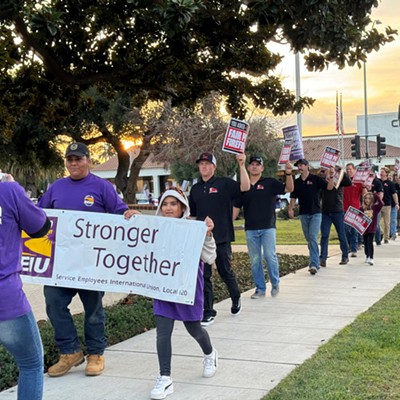Santa Maria got a taste of what political jurisdictions could look like on April 20, when three proposed district maps approved by the city were presented during a special City Council meeting at the Edwards Community Center. It was the third in a series of meetings about how to transition from at-large to district elections.
The council passed a resolution 3-2 on Feb. 21 that began the transition process, which came following a threat of a California Voting Rights Act (CVRA) lawsuit from local businessman and City Council candidate Hector Sanchez. Santa Maria is the county's second and largest city to adopt district elections since Santa Barbara did the same in 2015.
City Attorney Gil Trujillo said that to his knowledge Santa Maria is the first jurisdiction in California to transition under the threat of litigation from AB 350. The bill, approved by the governor in 2016, requires a plaintiff to send written notice to the city that its at-large system may be violating voting rights. It also requires the city to hold several meetings before and after the proposal of draft maps. AB 350 also caps attorneys' fees at $30,000 and prohibits litigation for 90 days starting from the resolution.
The bill supplements the CVRA, a law passed in 2002 that lowers the burden for minority groups to prove that they're being disenfranchised by at-large voting systems.
The city hired Claremont-based National Demographics Corporation (NDC) as a consultant to develop the districts. At the meeting, NDC President Doug Johnson presented three finalist maps, which all showed four districts with approximately 24,000 to 25,000 people each separated at the intersection of Broadway and Main streets.
Johnson used two standards of criteria consisting of federal laws, which state that each district must be essentially equal in population and can't be determined with race as a predominant consideration. Drawing districts in Santa Maria was an "interesting challenge" for Johnson, since the city is at least 70 percent Latino.
"Traditionally with districting or redistricting, we're looking at how we're going to get one or two seats that are majority Latino," Johnson said at the April 20 meeting. "How do we be careful not to pack too many Latinos so we're wasting their vote in a single seat? That's a much grayer area in the law."
Johnson also followed more traditional rules, such as not dividing communities of interest, keeping boundaries contiguous, and considering the downtown specific plan.
The public's reaction was mixed. During the public comment period of the meeting, some speakers urged the City Council to consider maps that didn't adhere to the Broadway and Main division, while others liked it that way.
"I feel that you should definitely take into consideration some of the community-submitted maps," said Abraham Melenedez of the Central Coast Alliance United for a Sustainable Economy (CAUSE), who expressed favor for his organization's map and one submitted by Councilmember Michael Moats. "I think it's important that you listen to the community and not an outside agency who clearly doesn't understand the communities here."
District elections would come as soon as November 2018, Johnson said, when voters choose the first two seats and then the second two in November 2020. Elections will still include an at-large mayor position.
Then, he added, the districts will have to be redrawn following the 2021 census, although likely not by much.
"When election day comes, we want them to be able to tell each other what doors to knock on and what doors are not in the district," Johnson said.
The proposed maps can be viewed online at cityofsantamaria.org. The next meeting on district elections will be held at 6:30 p.m. on May 2 at the Minami Center located at 600 W. Enos St.









